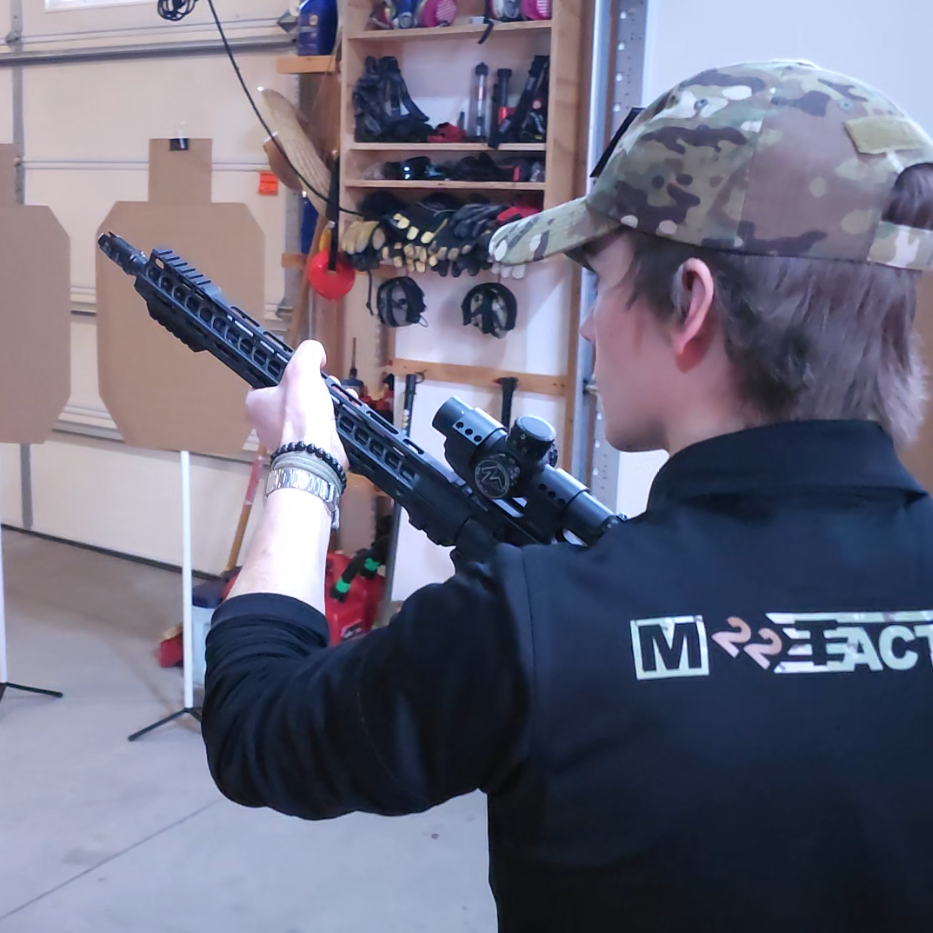Grand Rapids, MI
Dry fire training is one of the most effective methods shooters can use to enhance their skills, yet many fail to use it properly. Now that we’ve talked about the importance of dry fire training, let’s put it into practice. Understanding what to focus on can turn a simple routine into rapid improvement. Here’s the basics on how to ensure your practice sessions are purposeful and productive.
First, let’s talk about what to train on by looking at some goals. When conducting a dry fire session, there are several foundational aspects every shooter should aim to refine. These six basic goals include trigger control, sight alignment, grip and stance, weapon manipulation, draw and presentation and target transitions.
In terms of hitting the target, trigger pull and sight alignment are the most important…and they go hand and hand…so let’s talk about those two first.
Trigger control: it’s about one thing…maintaining sight alignment. Concentrate on each trigger pull, making sure they are deliberate and controlled. Avoid jerking or rushing the press. Avoid anticipating the recoil (dry-fire is especially suited for this). Exact technique is less important…just make sure it’s the same trigger pull and you’re consistently maintaining sight alignment through the shot. As you improve, increase the speed, maintaining that deliberate trigger pull and maintaining that sight picture.
As you get your trigger pull dialed in you can shift your focus onto the big one…sight alignment. Bring your weapon to bear, aligning your sights quickly and accurately, and keep them stable through trigger press and follow-through. As you’re pulling the trigger, concentrate intensely on maintaining proper sight alignment. Consistency here translates directly to accuracy during live fire.
Establishing and maintaining a firm, consistent grip and stable shooting stance is important. As a beginner, focus on grip and stance. Check your grip tension regularly during your dry fire session. Practice adopting your stance quickly and efficiently, ensuring stability and comfort. Most importantly, your grip and stance should be the same every time you bring your rifle to bear. It is the foundation for a reliable sight picture.
Weapon Manipulation should be practiced regularly. Smoothly performing loads, reloads, unloads and clearing malfunctions, only comes with practice. Integrate reload and malfunction drills into your dry fire routine. Slow down to ensure correct technique before increasing speed. Perform these tasks quickly and safely. Make sure your on safe as you perform a reload. On the range this will make a huge difference—you’ll know your weapon inside and out. You’ll have more room in your mind to maintain better situational awareness and have a more consistent sight picture.
Efficiently drawing your firearm and achieving immediate sight alignment is important no matter what your role is. Practice drawing your firearm from your holster or the low/high ready position consistently, working gradually on reducing your time while ensuring your movements remain controlled and safe. Do this often. A good test to see how well you are doing is to identify a target, close your eyes, bring your weapon to bear on that target. Open your eyes. Without moving, do you have a proper sight picture and sight alignment? If so, your movements are deliberate.
Practicing target transitions is essential. You want to engage the proper targets while keeping everything else safe. Whether you’re practicing for a competition with multiple targets and multiple stages, or you’re practicing to defend your home where there are only one or two targets, but the scenario is more complex and the stakes are much higher. Setting up examples of these stages or scenarios and practicing them will yield huge benefits in situational awareness, accuracy and safety–when it counts.
Now let’s discuss how to set up your training. A productive dry fire session should be…intentional. Have a clear goal for each session. Choose one or two specific skills to focus on each time. It should be short and frequent. Aim for short sessions (10-20 minutes) several times per week rather than long, infrequent ones. Sessions should always be focused and measured. Keep track of your progress. Consider using a training log to document each session and a shot timer to measure performance. This helps confirm your on the right track and identify areas needing improvement
Last but not least…Safety. Always prioritize safety during dry fire training. Verify your firearm is unloaded and cleared every single time. Remove live ammunition from your training space entirely. Choose a safe direction for your exercises, ensuring a proper backstop.
By incorporating these basics into your regular routine, you’ll enhance your fundamental skills, boost your overall shooting ability, and ensure each practice session contributes meaningfully to your growth as a shooter.
Written By: Alex DeVoe


